5 products
-
Nepal Buddha Statue Meditation Bronze Singing Bowl
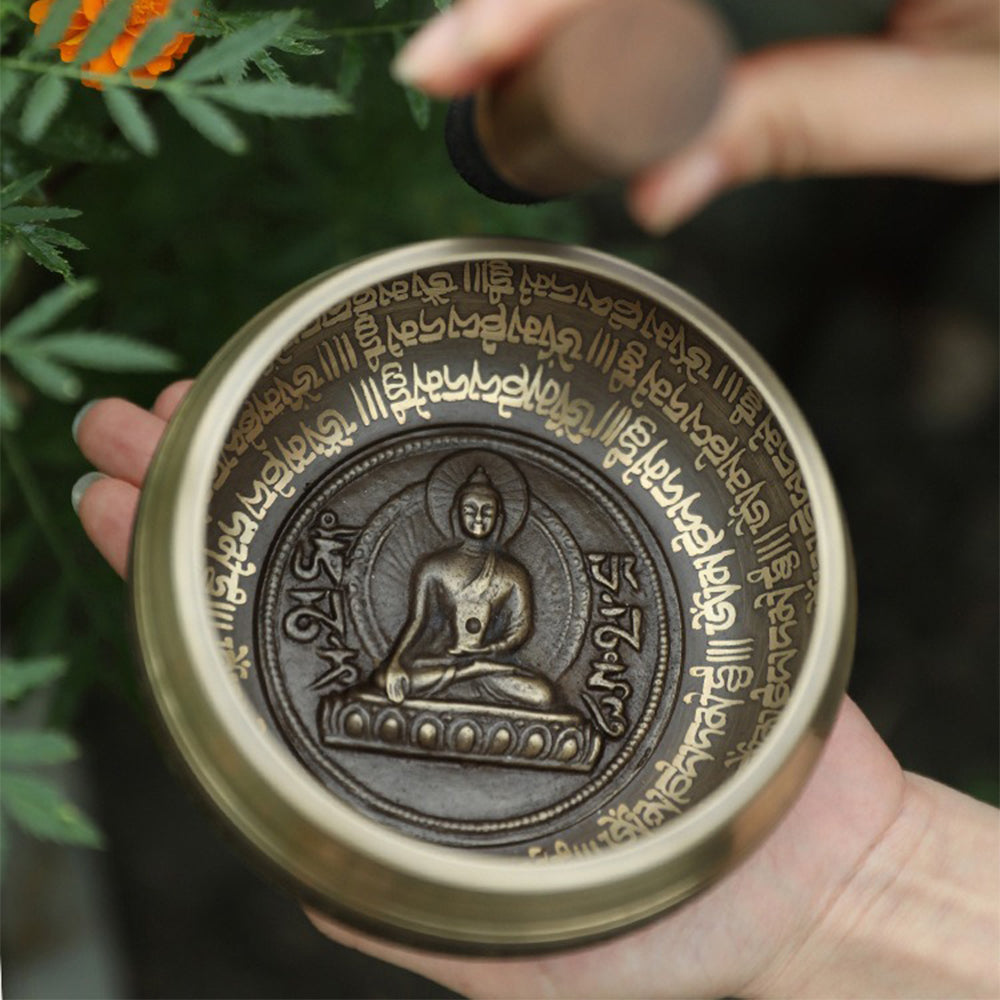 Nepal Buddha Statue Meditation Bronze Singing Bowl
Nepal Buddha Statue Meditation Bronze Singing Bowl- Regular price
-
$66.98 USD - Regular price
-
- Sale price
-
$66.98 USD
Quick view
-
Nepal Meditation Six Petal Flower Bronze Singing Bowl
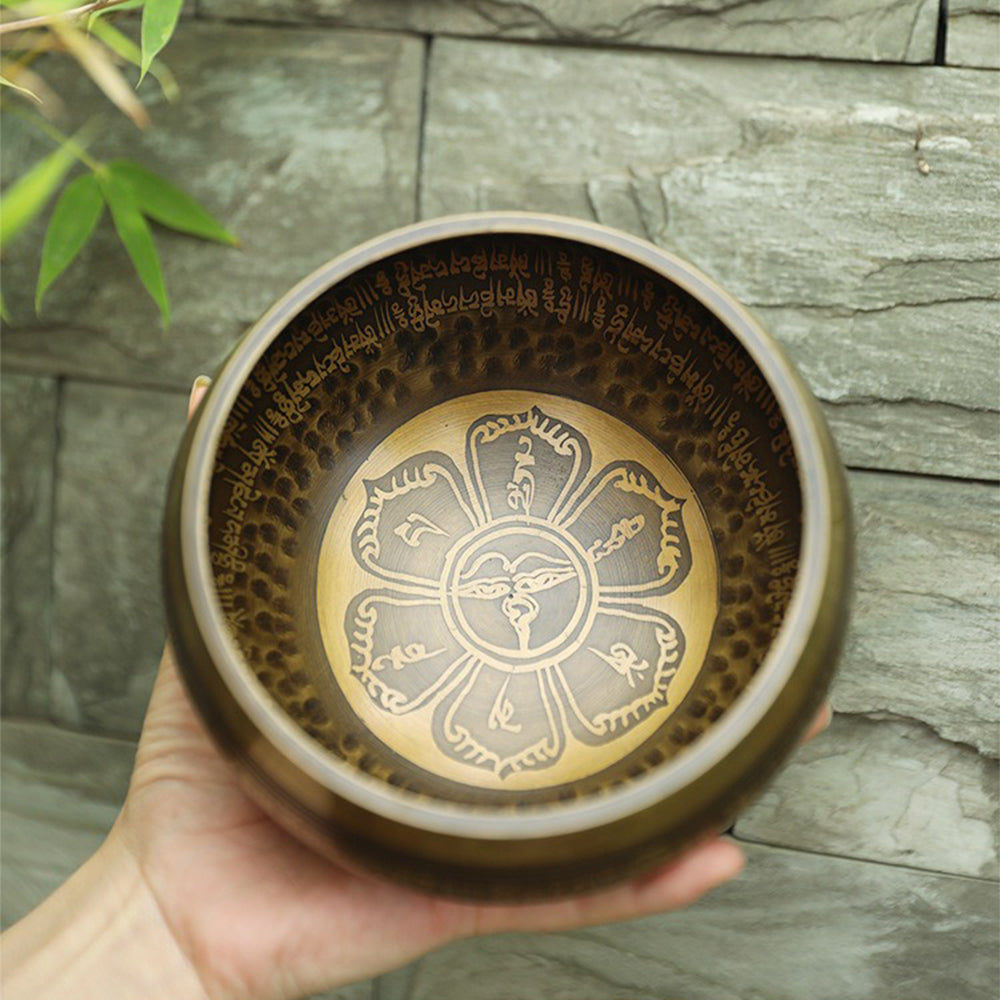 Nepal Meditation Six Petal Flower Bronze Singing Bowl
Nepal Meditation Six Petal Flower Bronze Singing Bowl- Regular price
-
$119.98 USD - Regular price
-
- Sale price
-
$119.98 USD
Quick view
-
Nepal Meditation Six Words Bronze Singing Bowl
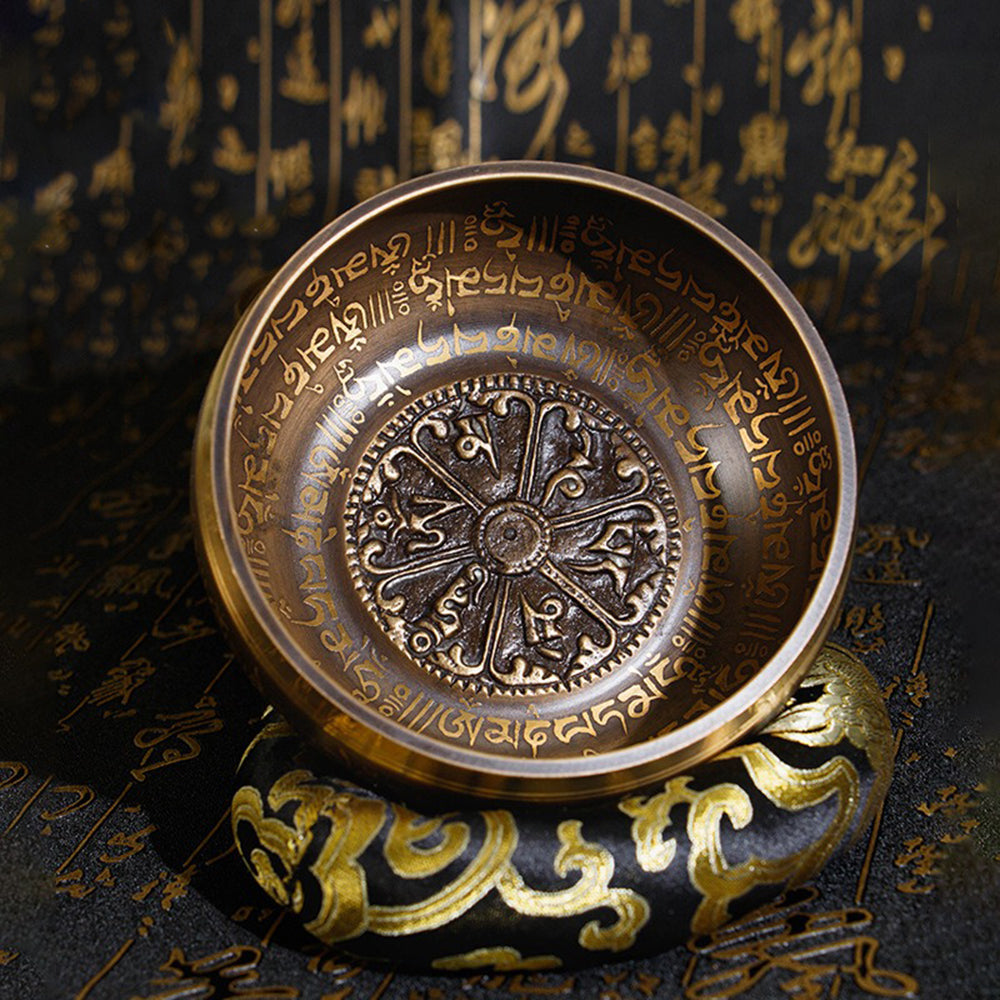 Nepal Meditation Six Words Bronze Singing Bowl
Nepal Meditation Six Words Bronze Singing Bowl- Regular price
-
$63.98 USD - Regular price
-
- Sale price
-
$63.98 USD
Quick view
-
Nepal Meditation Mandala Bronze Singing Bowl
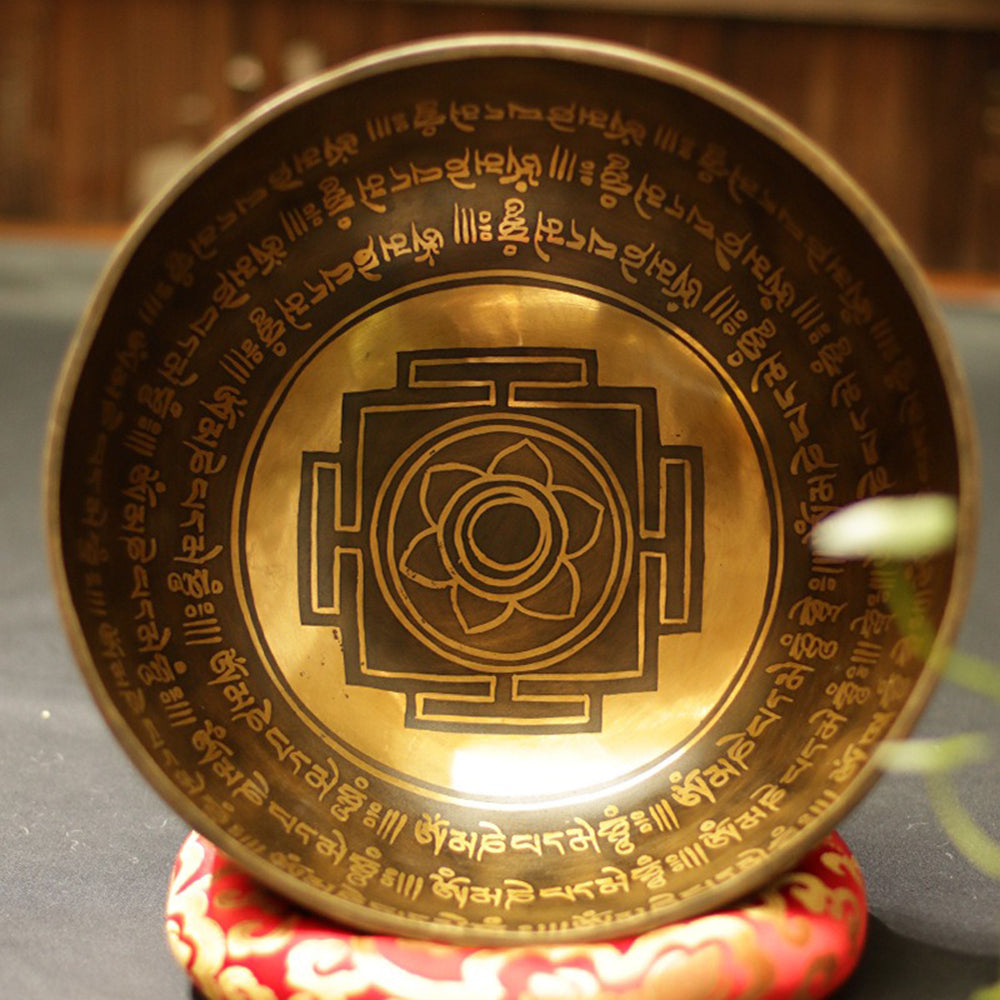 Nepal Meditation Mandala Bronze Singing Bowl
Nepal Meditation Mandala Bronze Singing Bowl- Regular price
-
$202.98 USD - Regular price
-
- Sale price
-
$202.98 USD
Quick view
-
Handmade Nepal Meditation Bronze Singing Bowl
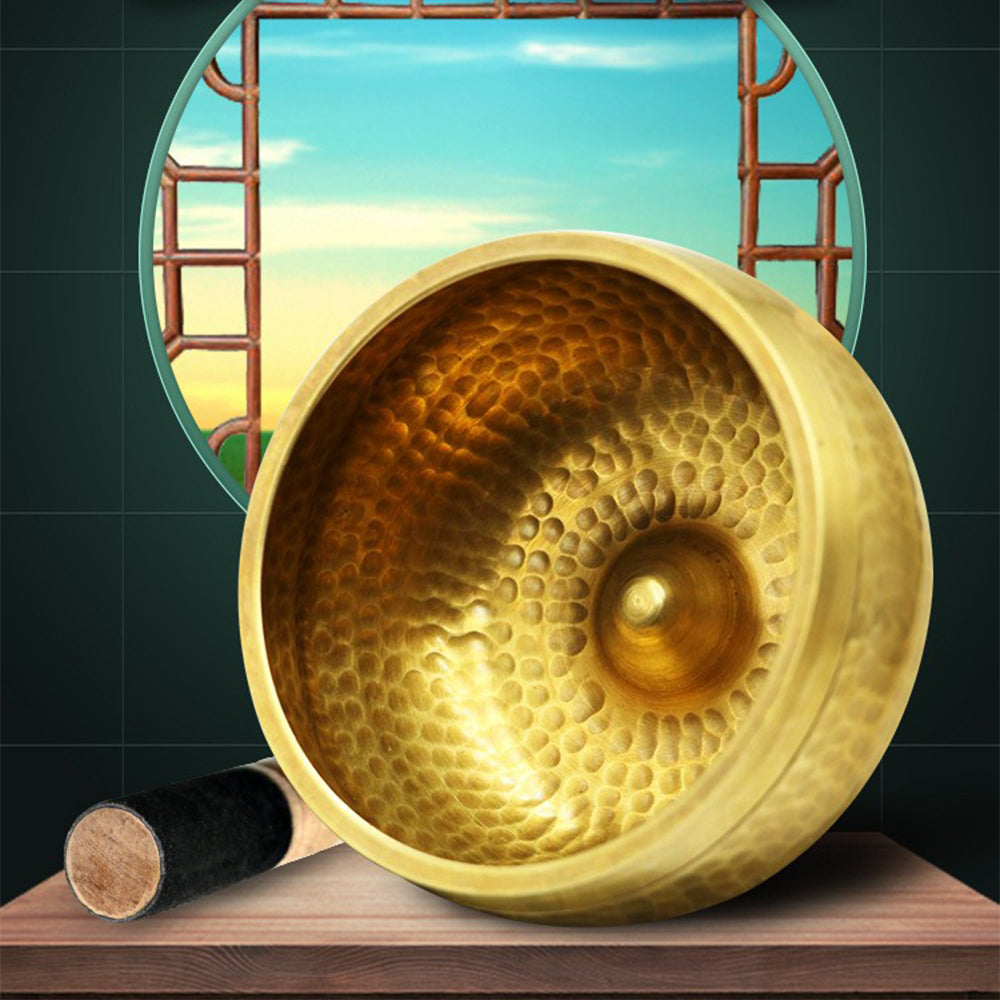 Handmade Nepal Meditation Bronze Singing Bowl
Handmade Nepal Meditation Bronze Singing Bowl- Regular price
-
$45.98 USD - Regular price
-
- Sale price
-
$45.98 USD
Quick view
What Is Singing Bowl?
Singing bowl, also known as Himalaya bowl, is a traditional Buddhist tool originating from the Himalayan region. In ancient times, people collected gold, silver, copper, iron, tin, lead, as well as mercury from the Himalayas. They melted and refined them, and then handcrafted them to create singing bowls. In Tibetan Buddhism, singing bowls are often used together with scriptures, buddhist beads, and other objects for activities such as meditation, praying, and exorcising demons.
In fact, "bowl" was originally a kind of tool used for eating in the Himalayan region. Later, people found that the unique sound and audio it produces through tapping made it a perfect musical instrument. Each singing bowl can make a unique sound through tapping and rubbing, which is able to help people feel calm, relaxed, and quickly start meditation.
Singing bowl not only plays an important role in Buddhist culture, but also has profound cultural significance and artistic value, and is widely used in practicing Buddhism, meditation, musical therapy, as well as sound healing. The sound of singing bowl is ethereal and airy, capable of cutting off and releasing negative emotions from the root. It can improve physical and mental health by alleviating anxiety and tension, as well as relieving insomnia. Besides, it can also alleviate symptoms such as headaches and indigestion, thus helping individuals improve vitality and energy. In modern times, singing bowl has been applied in musical therapy and sound healing, creating a unique natural therapy system. In addition, singing bowl is also used for self-improvement and self-discovery, which can help people delve deeper into their inner world, finding the goals and directions of life.

The Origin And History of Singing Bowl
It is said that singing bowl originated in India around 1000 BC. With the introduction of Buddhism to Tibet, Nepal and other regions, singing bowl has gradually evolved into a unique Tibetan Buddhist instrument, and became a distinctive Buddhist cultural phenomenon. Singing bowl was originally a tool used by monks as a food utensil, but later it was discovered that these bowls can make wonderful sounds through tapping. The sound of singing bowl is quiet and ethereal, allowing people to quickly start meditation, and thus many Buddhist monks began using it for meditation. They believe that the sound of singing bowl can improve the energy of the body and mind, help people reduce stress, enhance mental focus, and achieve inner peace.
Singing bowl holds a very important position in Tibetan Buddhism. It is said that the founder of Tibetan Buddhism, Zongkhapa, once used a singing bowl for practicing Buddhism. What’s more, Tibetan singing bowl is also widely used in various Buddhist activities such as reciting the scriptures, Dharma ceremonies, as well as worshipping. In Tibet, singing bowl is also used in traditional medicine to treat various diseases, such as headache, insomnia, indigestion, and so on. In addition to Buddhism and traditional medicine, singing bowl is also gaining popularity in the field of sound healing. Modern scientific research has shown that the sound produced by the singing bowl can improve the mental and physical health of the human body, and can also help alleviate stress, anxiety, as well as depression.
In the 1960s, many Western tourists marveled at the amazing timbre of the ancient Buddhist bowl, and thus named it Tibetan singing bowl and brought it back for research. The mysterious singing bowl began to be recognised by Westerners, and it then was widely used in meditation and spiritual healing due to its heavenly melody. The healing effect of singing bowl was gradually valued in the process of scientific development. After so many people experiencing the trauma of World War II, the psychological community still failed to provide effective psychological counseling through various psychological means. Later, with the help of Tibetan singing bowl, many people received great relaxation of body and mind. Nowadays, Tibetan sound healing has been widely used in auxiliary medical treatment in various parts of Europe and America, and has been clinically proven to have therapeutic capabilities.
The Principle behind Singing Bowl Healing
The healing principle of singing bowl is mainly based on its vibration characteristics. The specific frequency of the bowl sound produced through tapping can cause resonance of water molecules in human cells. This resonance effect can improve blood circulation as well as metabolism, and bring physical and mental relaxation and balance. The vibration of the singing bowl can also penetrate deep into the human body, resonating with internal molecules, thus helping unblock meridians and chakras, and relieving muscle pain.
In addition, the healing effect of the singing bowl is not limited to the physical level, but also includes the spiritual level. It can help alleviate psychological problems such as anxiety and depression, and therefore can help people better cope with challenges and pressures in life.
How to Choose A Suitable Singing Bowl for Yourself
Select from Materials
Copper Singing Bowl
It is known for its warm tone and long-lasting echo and is suitable for deep meditation.
Mixed Material Singing Bowl
Bowls such as copper plated with gold or copper plated with silver have mixed materials, and usually have a richer tone level.
Traditional Metal Singing Bowl
Traditional metal singing bowl includes iron bowl and tin bowl, generally having a deeper sound and is suitable for relaxation and healing.
Non Metallic Singing Bowl
Non metallic singing bowl includes ceramic singing bowl, stone singing bowl, crystal singing bowl and so on. These bowls have unique sound quality and are suitable for those seeking new experiences.
Select from Size And Weight
The size and weight of a singing bowl can directly affect its tone and usage. Small musical bowls are suitable for personal use, while the large are suitable for group activities. When selecting, it is necessary to take the usage situation and carrying capacity into consideration.
Small singing bowl is usually lightweight, easy to carry, and can produce a sound as clear as a stream, making it very suitable for small groups and is often considered as a meditation bowl.
Large singing bowl is heavier in weight, with a loud and deep sound, resembling echoes in a valley, and is suitable for large- scale group activities such as yoga or meditation.
Select from The Tone
The tones of the singing bowl are highly diverse, from deep bass to crisp high notes, each of which is like a different musician playing their own tune. From bass to treble, each tone has its unique effect. For example, bass helps to relax the body, while treble helps to improve mental state.
How to Perform Singing Bowl Therapy
Singing bowl therapy can be practiced in various ways, such as using it alone, used in combination with other healing methods, or practicing it in concerts, yoga classes, and other settings. Here are several common methods.
Using The Singing Bowl Alone
Firstly place the singing bowl in your hand and then gently tap it to feel its vibration, and then observe body reactions under different frequencies and intensities of the healing bowl. When the body is fully relaxed, you can also try placing the bowl on a certain part of the body to feel its resonance effect.
Participating in Singing Bowl Workshop
Participating in singing bowl workshop is a great way to perform singing bowl therapy. Under the guidance of a professional mentor, one can learn how to use the singing bowl correctly and how to share the sound of the singing bowl with others. Besides, workshops would often give a detailed introduction of the history, cultural background, and psychological effects of singing bowls.
Used in Combination with Other Healing Methods
Singing bowl therapy can be performed through combination with other healing methods such as yoga, meditation, massage and so on. Through these methods, one can better feel the effect of the singing bowl sound, while also helping to relax the body and mind.
Participating in Singing Bowl Concerts And Lectures
In singing bowl concerts and lectures, one can enjoy the sound of it at different frequencies, and learn its scientific principles and practical methods. These occasions often involve introductions of other related psychological and physical health research, which helps to broaden our understanding of singing bowl sound therapy.

The Benefits of Singing Bowl Therapy
Relax The Mood
Singing bowl therapy is a kind of sound therapy, and the resonant sound waves of the bowl can improve the viability of cells and the energy of the human body, helping to release tension and pressure. With the rhythm of tapping, people can feel a deep relaxation and calmness.
Improve Sleep Quality
The low-frequency sound of the singing bowl can help us relax our brain, clear our thoughts, and quickly fall asleep, thus improving sleep quality.
Unblock The Chakra
According to theory, different singing bowls have different audio frequencies, and each frequency corresponds to the vibration of different organs in the body. After finding the frequency corresponding to the chakra, the sound produced by tapping the chakra bowl can resonate with the vibration of different organs inside the body, thereby unblocking the chakra.
Improve Blood Circulation
The performance of the sound bowl can help improve the circulation of blood and water molecules in the body, thus improving metabolism. Besides, the resonant sound produced by the singing bowl can help to balance physical and mental energy, unblock meridians, as well as enhance inner self-healing power.
Relieve Physical Pain
The sound vibration of the singing bowl can penetrate deeply into human tissues and blood, and hence is capable of unblocking meridians, relieving pain in muscles, joints, and so on. Especially for those who have been suffering from physical pain for a long time, singing bowl therapy can effectively help them relieve the pain.
Maintain Beauty And Keep Young
The Tibetan singing bowl can also plays a role in maintaining beauty and keeping young. It can improve physical condition by producing different sound frequencies and vibration wavelengths. The audio vibration of singing bowl can promote the firmness and elasticity of facial muscles, help remove wrinkles, improve facial contours, and make the skin younger and more elastic. In addition, its audio vibration can also promote facial blood circulation, help clean pores, promote metabolism, and thus improve skin tone and texture. Nowadays, singing bowl therapy has become a popular way of health preservation and maintaining beauty.
Unleash Potential
The vibration of the singing bowl can stimulate the activity of the cerebellum and pineal gland, which can help people discover their potential and wisdom, and thus better achieve self growth and development.

Precautions for Using A Sound Healing Bowl
1. Patients with fractures cannot undergo singing bowl therapy.
2. For those who have metal objects such as heart stents and pacemakers inside the body, it is recommended to avoid placing the singing bowl on the corresponding body parts.
3. Pregnant women should avoid placing the singing bowl near their abdomen. Instead, they can place the bowl several feet away from their body and gently tap it. In addition, pregnant women under 14 weeks should avoid undergoing singing bowl therapy, as the vibration of the bowl may affect the growth of the fetus in the early stages.
4. When undergoing singing bowl therapy, it is not recommended for both the healer and the person being healed to wear any jewelry, especially metal jewelry, as the bump may have an adverse effect.
5. It is important for children under the age of 7 to avoid singing bowl therapy as their organs are still not fully developed, and the vibrations may affect the organ development.
6. It is necessary to keep singing bowl from prolonged immersion in water and excessive exposure to sunlight. Especially when it is dippen in water, one should wipe the bowl timely, in case it gets rusty.
7. One can gently wipe the surface of the singing bowl with a soft dry cloth at regular time to keep it clean. Do not use hard objects such as steel wire balls or cleaning agents containing acidic substances to rub or clean the surface of the bowl, as such behaviors can cause scratches on its surface.
Who Should Undergo Singing Bowl Therapy
1. People who often sit for a long time and have physical fatigue
2. People who have low sleep quality and often suffer from insomnia
3. People who hope to relieve stress and better control their emotions
4. People who suffer from anxiety, depression and other negative emotions
5. People who want to gain a deeper understanding of themselves and achieve self-improvement as well as self-discovery
6. People who hope to improve physical and mental health, as well as spiritual integration




